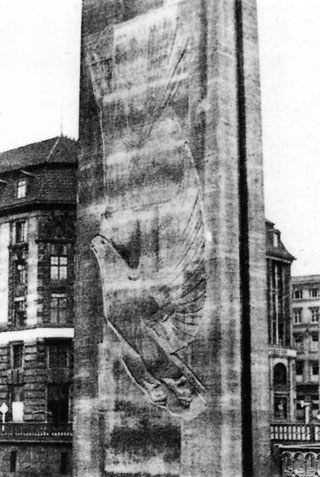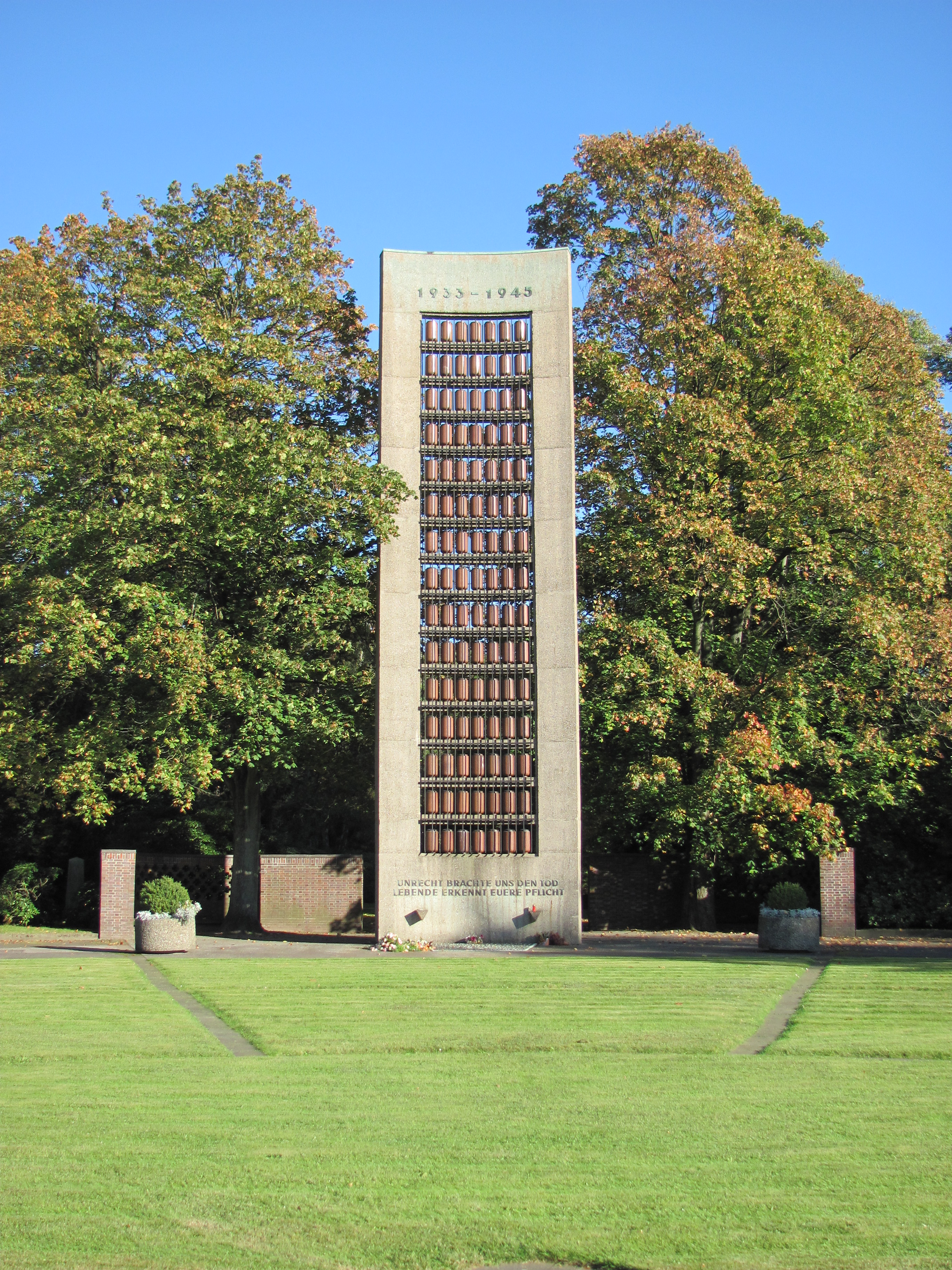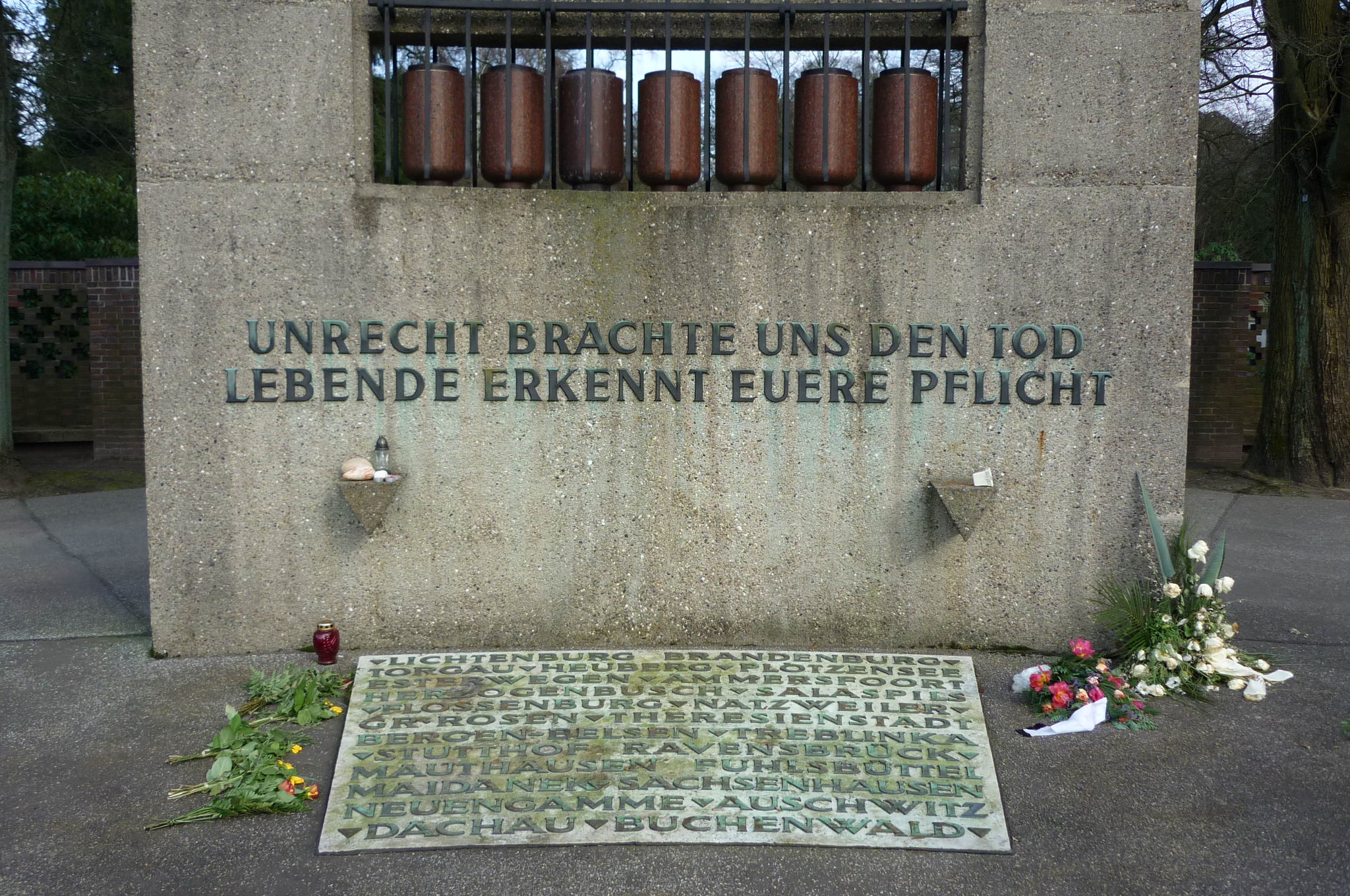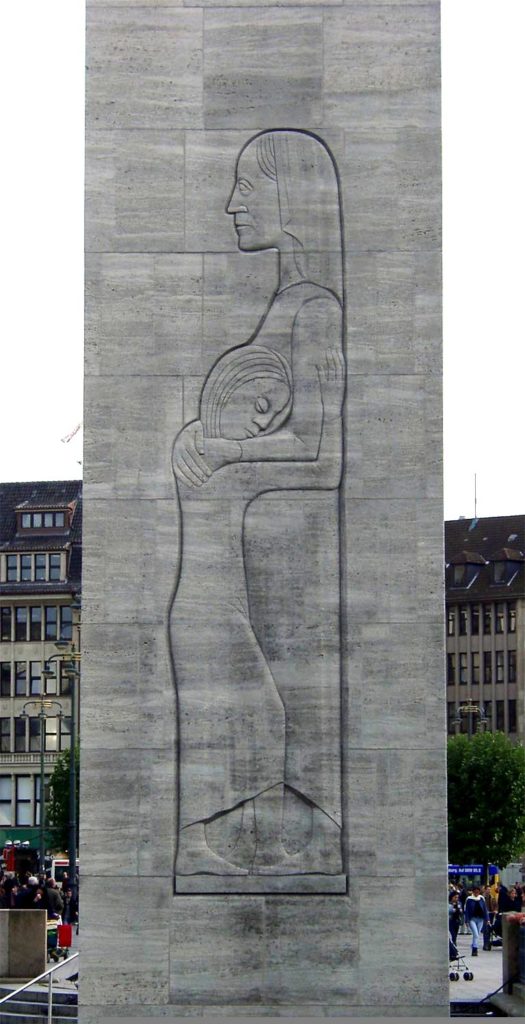This article is a follow-up to the discussion on Stéphane Lévesques model of historical competencies as presented in Public History Weekly, a few days ago, titled „Removing the ‚Past‘: Debates Over Official Sites of Memory“(( Lévesque, Stéphane: Removing the “Past”: Debates Over Official Sites of Memory. In: Public History Weekly 6 (2018) 29, DOI: dx.doi.org/10.1515/phw-2018-12570. There also is a German and a French version. )) and my first extended comment on this published here on this blog.
A crosstabulation of competencies and patterns/logic of sensemaking as suggested by Stéphane Lévesque(( Another such crosstabulation has been suggested (in German) by Wolfgang Hasberg (Analytische Wege zu besserem Geschichtsunterricht. Historisches Denken im Handlungszusammenhang Geschichtsunterricht. In: Meyer-Hamme, Johannes / Thünemann, Holger / Zülsdorf-Kersting, Meik (Hrsg.): Was heißt guter Geschichtsunterricht? Perspektiven im Vergleich. Schwalbach/Ts. / Wochenschau, S. 137–160, p. 140). For my critique see Körber 2016 (in German). I also provided a table, including the different niveaus, but restricted to „Fragekompetenz“ (similar to Lévesque’s „inquiry competence“). )) is indeed useful for „reading“ individual monuments and making sense of their „message“, also. Lévesque’s filling of the table is a bit abstract, general for this, so the following would in part be my own understanding.
It also is based on Rüsen’s notion that while the different patterns were developed sequentially over time, to „older“ ones are not lost, but still available and indeed visible in modern day thinking, in fact most of the time in combinations. What characterizes modern-time historical thinking, then, is the presence and dominance of „genetic“ thinking, while pre-modern thought would not have this type at its disposal at all. But then, our examples here are all „modern“, so that it may be a question of dominance and relative weight.
Take a monument for a civil war general:
- A spectator today may read it as a reminder to the origin of the current state of affairs, possibly the „losing of the cause“ (e.g. both the honoured general and the spectator being southeners) or to the liberation of the slaves (both northeners). In both cases, the monument would be seen as pointing to an origin of what is seen as valid today (the very definition of Rüsen’s „traditional“ type). This might explain why people adhering to the northern narrative would oppose to southern monuments, and vice versa, not believeing their story in the first place — and maybe fearing that keeping the monuments would signify that their version was to be seen as valid.
- In an exemplaric mode, however, both may accept the „other side’s“ monuments, because what they point at would not be seen as the origin of affairs, but rather a general rule, e.g. honouring people „bravely fighting for their respective (!) cause“. The logic would be that each society would honor „their heroes“, who do not so much stand for the specific cause but for a general rule. What happens on the ground in Gettysburg, e.g., is something along this line: „Traditional“ commemorating attracts most people going there, but an exemplary „cover-narrative“ allows for common remembrance.
Consider an example from Hamburg, where I work(( I used this also in a twitter-discussion with Kim Wagner (@KimAtiWagner) recently. )): On our „Rathausmarkt“, there is a monument, honouring Hamburg’s dead from WW1. When it was erected in 1932, it looked as it does today. The inscription on one side reads „FOURTY THOUSAND SONS OF TOWN LEFT/LOST THEIR LIVES FOR YOU“ (in German: „Vierzig Tausend Söhne der Stadt ließen ihr Leben für Euch“) while the other side shows relief by Ernst Barlach depicting a woman (mother) and child (daughter) apparently comforting each other in mourning (and therefore somewhat reminiscent of a pietà).
In 1938, the relief was exchanged for a „phoenix“ flying up.(( For more pictures and information see also https://www.denk-mal-gegen-krieg.de/kriegerdenkmaeler/hamburg-lo-os/. ))

Hans-Martin Ruwoldt (1938): Phoenix on Hamburg Town Hall Square Monument. Photo by https://www.denk-mal-gegen-krieg.de/kriegerdenkmaeler/hamburg-lo-os/
In 1938, under Nazi rule, the relief was exchanged for a „phoenix“. Did it change the narrative and commemorative evaluation of the loss of the 40000 Hamburgians? To my view, it most certainly did.
The addition of the last part „FOR YOU“ to the inscription already before the initial installation of the monument was a concession to the right parties, changing (in Rüsen‘s terms) a more traditional message into a more exemplary one:
While the combination of the initial wording without the addition „FOR YOU“ and the mother-child-relief fit into a development of monument culture developed in WW1 which has been identified in retrospect, namely monuments which which do no longer provide an authoritative suggestion of the meaning of the protagonist‘s death, but rather question this meaning.(( On this type of monuments cf. Koselleck, Reinhart (1994): Einleitung. In: Reinhart Koselleck und Michael Jeismann (Hg.): Der politische Totenkult. Kriegerdenkmäler in der Moderne. München: Fink (Bild und Text), S. 9–20, here p. 18f. )) It did so because it expressed the continuous loss, referring to the dead soldiers rather as victims of a greater context of war, to be mourned, by pointing to their their death and loss as the rather tragic origins of the common grief.
Adding „FOR YOU“ to the inscription did not fully eradicate this negative-traditional narrative pattern, but added an additional layer of different narrative and evaluative character both to the deaths, which are ascribed a purpose, and to the conceptual framing of the dead, which are no longer only victims but also (self-)sacrifices for a common good. Interestingly, both concepts, that of victim and that of sacrifice, are present in the German term „Opfer“ explicitly used, but alluded to, here.
The exchange of the mourning mother/child-relief by a „phoenix“ in 1938, then, eradicated the thin layer of questioning the purpose and meaning of the loss, the notion of „victims“ and rendered the 40,000 Fathers, Brothers and „Sons of Town“ heroes – not only self-sacrifices for the wellbeing of their respective families, but role-models to be celebrated and emulated.(( According to Klingel, Kerstin (2006): Eichenkranz und Dornenkrone. Kriegerdenkmäler in Hamburg. Hamburg: Landeszentrale für Politische Bildung, p.71, the mourning-relief initially was to be replaced by „war symbols“ but all skteches handed in by artists (including a wrath with swords by Ruwoldt) were rejected, so that he was commissioned to create an eagle, which he did, but in a way which far more resembled a dove than an eagle. In how far this can be interpreted as a subversive rejection of the new martial character and even be evaluated as an act of defiance, is highly questionable, since the symbolism of the dove as the universial symbol for peace was created by Picasso only after WorldWar II. )) In 1948, then, the lost Barlach-relief, was restored, alas not by Barlach himself, who had meanwhile died.
I do have a hard time constructing a genetic understanding of such a monument, maybe because a modern, genetic way of thinking needs to have been informed by the „critical“ mode of at least partly de-legitimizing the orientating power of traditional and exemplaric thinking.
Maybe this is the background for modern monuments being quite different, either often non-figurative — as Peter Eisenman’s Memorial to the Murdered Jews in Berlin, or many works by Jochen Gerz(( Cf. e.g. his „Invisible Monument“ in Sarbrücken: https://en.wikipedia.org/wiki/Platz_des_Unsichtbaren_Mahnmals. )) — or taking on forms of counter-memorialization(( Cf. a.o. Wijsenbeek, Dinah: Denkmal und Gegendenkmal. Über den kritischen Umgang mit der Vergangenheit auf dem Gebiet der bildenden Kunst. München 2010. )), thus setting in motion a kind of change, not just re-present-ing a past, but encouraging or even enforcing critical reflection on it.
It is easier for the Hamburg monument: Genetic thinking would question whether not only this heroifying way of commemorating heroes (even if not individual), but also the concrete form of public acknowledging of tragic loss can be timely, after we experienced another war and an inhuman dictatorship and genocide which was not least based on feelings instigated by such commemorating.(( There’s a lot more to be reflected in commemorating: Who talks to whom, here? What do they say and expect? Who is the „you“? Is it “ us“ – still today? And if so: in how far is the message the same for all of us, those with Hamburg ancestors of the time, and those without, maybe immigrants? In how far can this aspect define our attitude? Can we force all recent immigrants into our own „national“ narrative (and even more so when it is not WW1, but Holocaust related)? But then, how can we not? (cf. also Körber 2014, and see below. ))
But there is something more to reflecting about narratives — and especially on how to relate to them. As I wrote above, Memorials are narratives. Rüsen calls them „narrative abbreviations“, pointing to them standing for a specific narrative, i.e. a specific relation between a past (under memory), the present (of the authors and erectors of the monument as well as the intended public), and with regard to a specific future, constructed only partly in verbal narrative form, but also with non-verbal and sequentially narrative elements (even though in some cases it is only the verbal inscriptions which really hint to any historical meaning).
Memorials are more than only proto-narratives. Their (often) prominent (albeit also often overlooked) positioning, their (proto-)narrative structure and their own quality for lasting a long time (cf. „monumentum exegi aere perennius), they do not only constitute a narrative relation from one temporal and social position towrds the past and the future, but also are meant to prolong the sense they make and to impose it on later generations. Monuments are about obligating their audience, the spectators with a certain narrative and interpretation. That qualifies them as parts of what we call „politics of history“, not only of commemoration, and what makes them political.
It therefore is paramount to read monuments as narratives, and not only in the de-constructive sense of „what did those erectors make of that past back then“, but also in the re-conctructive sense of „in how far or how does this narrative fit into my/our relation to that past). In other words: Standing before a monument and thinking about monuments, we all need to (and in fact do) think in a combination of understanding the others‘ and deliberating our own narrative meaning-making.
Therefore we need to read them as narratives first, and become competent for it.
Monuments often take on the form of addressing people. Sometimes — as in the Hamburg case above — they address the spectator, reminding them of some kind of obligation to commemorate.(( My mother used to explain the German word „Denkmal“, literally referrring to a „mark(er)“ for initiating thinking, as an imperative: „Denk mal!“, referring to the other meaning of the word „mal“ as „for once“, resulting in „do think for once!“ )) But who is talking to whom? If the senate of Hamburg talkes to that to the Hamburg citizens of 1930-1932, can/will we accept that (a) the Hamburg Senate of today still admonishes us like that, and b) that we Hamburg citizens of today are still addressed in the same way?
In other cases, (inscriptions in) memorials might explicitly address the commemorated themselves, as e.g. in the confederate monument in Yanceyville, N.C., whose plaque reads „To the Sons of Caswell County who served in the War of 1861-1865 in answer to the Call of their County“, and continues in a „We-Voice“, signed by the Caswell Chapter of the United Daughters of the Confederacy“. So far so conventional. This might be rather unproblematic, since speaker-position and addressees are clearly marked. One might leave the monument even if one disagreed, not having to align with its narrative. Only if the presence of such commemorating in itself is inacceptable, action is immediately called for.
But there are other monuments which seem to talk from a neutral position, which in fact is that of the erectors, but by not being qualified, includes the spectator into the speaker position. The example I have ready at hand, is not from the US and not about war heroes, but again from Hamburg, this time from Neuengamme concentration camp memorial. In 1965, an „international monument“ stele(( Cf. https://upload.wikimedia.org/wikipedia/commons/thumb/1/15/Neuengamme_memorial.jpg/800px-Neuengamme_memorial.jpg, (photo by Hao Liu in the public domain) )) was erected there, together with a whole series of country-specific memorial plates. The inscription on the monument reads „Your suffering, your fighting and your death shall not be in vain“ (my translation).
This now clearly is interesting in at least two respects: (1) it ascribes not only suffering and death, but also fighting to those commemorated and thereby possibly does not refer to those inmates who never had a chance or did not „fight“, who were pure victims, and (2) it speaks from a neutral voice which is not marked in time and social, political or event-related position. Whoever mourns at that place possibly silently co-signs the statement.

International Monument (1965) at Neuengamme Concentration Camp Memorial (partial photo; (c) 2006 Andreas Körber)
Consider an equal honouring of confederate generals in, say NC: „Your fighting shall not have been in vain.“ I would spark much more controversy and concers — and rightly so.
Still another example, the first Hamburg monument for the victims of National Socialism (from late 1945) on the Central Cemetry in Hamburg-Ohlsdorf, has an inscription „Injustice brought Us Death — Living: Recognize your Obligation“.

Erstes Hamburger Mahnmal für die Opfer des Nationalsozialismus von 11/1945 in Hamburg Ohlsdorf. Foto von NordNordWest/Wikipedia. Lizenz: CC-BY-SA 3.0; (https://creativecommons.org/licenses/by-sa/3.0/de/legalcode); Original: http://commons.wikimedia.org/wiki/File:Mahnmal_Opfer_der_NS-Verfolgung_Ohlsdorf.jpg

Erstes Hamburger Mahnmal für die Opfer des Nationalsozialismus von 11/1945 in Hamburg Ohlsdorf; Detail. Zustand 25.3.2010; Foto (c) Andreas Körber
Again, for analyzing and understanding, we need to recognize. The speaker position here, is clearly (metaphoricall) held by the victims to be commemorated. But whom do they speak to? Literally, it is the „living“. In a very broad understanding, the monument/memorial therefore addresses all humans, quite in a way what Rüsen has addressed as the highest level of normative plausibility: broadening the perspective to the level of humanity.
This is not very problematic, since the inscription does talk of „duty“, not of „guilt“, it does not conflate the addressees with those who inflicted the injustice upon the victims. But it could have done. In 1945, the message would be clearly not merely universally humanistic, but at least also addressing the Germans as the society of the perpetrators. It does not condemn, but calls for recognizing the „duty“ and responsibility for commemorating and non-repeating as well as overcoming the structures of NS injustice, hinting at responsibility for not preventing them or even participating in them in the first place.
And today? In how far is the message the same for today’s society in Germany? The people living in Germany today do — apart from very few exceptions — not share any personal guilt or responsibility for what happened. In how far can or should they see themselves addressed?
Again, there is no question as to the very general, humanity-related address. This is directed at any audience. But would that mean that there is no difference between any other visitor to the memorial and Germans? Has the Nazi injustice (and similarly the Holocaust) become a matter of general, universal history only? Is there no special belonging to and message for German history? All these questions can and need to be addressed — and especially so, since a considerable part of German society consists not only of people born and raised (long) after the „Third Reich“, but also of many who immigrated from other countries, societies and cultures meanwhile. Are they simply counted into the perpetrators‘ society? — no, I think; but as people living in Germany, they also are adressed in a more specific way than any other visitor — and they are expected to feel addressed, also. While there may be (and often indeed is) not specific responsibility for what these memorials and monuments refer to, there surely is a specific responsibility from or out of this history — and these monuments therefore serve not only as general markers to a set past, but also as marks which have specific messages and different (but compatible) ones for different recipients. This is what also is a part of what is needed to be reflected and discussed with regard to monuments in public history culture and what history education needs to enable learners to partake in.
In order to make up our minds on monuments we have „inherited“ not only in political terms, we need to reflect their specific narrative message in a spectrum of time-relations. And we need to differentiate our terminology and enable our students to master a set of concepts related. We need, e.g., to distinguish honoring forms of commemoration from reminding and admonishing ones.
In Germany we have (not easliy) developed the notion of „Mahnmal“, admonishing, to be distinguished from a mere „Denkmal“ (literally a „thinking mark“). But even this distinction is insufficient. A Mahnmal (in fact the literal translation to „monument“, from Latin „admonere“) may admonish to remember our own suffering inflicted on us by ourselves, some tragic or by others, but also may admonish to not forget what we inflicted on others. This is the specific form „negative memory“ of German memorial culture.
Therefore, there’s a lot more to be reflected in commemorating:
- Who „talks“? who authors the narrative — and is what capacity (e.g. in lieuf of „the people“, of a certain group, …)?
- whom does the monument explicity address?
- what is the relation of explicit addressees and factual spectators?
- in how far is the message the same for us today as it was envisioned back then — and possibly realized? is it the same for all of us?
- what kind of message is perceived?
(cf. Körber 2014)
References:
- Hasberg, Wolfgang (2012): Analytische Wege zu besserem Geschichtsunterricht. Historisches Denken im Handlungszusammenhang Geschichtsunterricht. In: Meyer-Hamme, Johannes / Thünemann, Holger / Zülsdorf-Kersting, Meik (Hrsg.): Was heißt guter Geschichtsunterricht? Perspektiven im Vergleich. Schwalbach/Ts. / Wochenschau, S. 137–160, p. 140.
- Klingel, Kerstin (2006): Eichenkranz und Dornenkrone. Kriegerdenkmäler in Hamburg. Hamburg: Landeszentrale für Politische Bildung.
- Körber, Andreas (2014): De-Constructing Memory Culture. In: Teaching historical memories in an intercultural perspective. Concepts and methods : experiences and results from the TeacMem project. Hrsg. von Helle Bjerg, Andreas Körber, Claudia Lenz u. Oliver von Wrochem. Berlin 2014, 145-151.
- Körber, Andreas (2016): Sinnbildungstypen als Graduierungen? Versuch einer Klärung am Beispiel der Historischen Fragekompetenz. In: Katja Lehmann, Michael Werner und Stefanie Zabold (Hg.): Historisches Denken jetzt und in Zukunft. Wege zu einem theoretisch fundierten und evidenzbasierten Umgang mit Geschichte. Festschrift für Waltraud Schreiber zum 60. Geburtstag. Berlin, Münster: Lit Verlag (Geschichtsdidaktik in Vergangenheit und Gegenwart, 10), S. 27–41.
- Rüsen, Jörn (2017): Evidence and Meaning. A Theory of Historical Studies. Unter Mitarbeit von Diane Kerns und Katie Digan. New York, NY: Berghahn Books Incorporated (Making Sense of History Ser, v.28).


